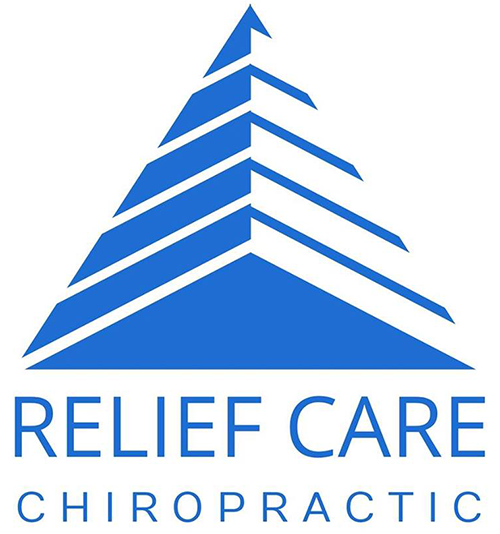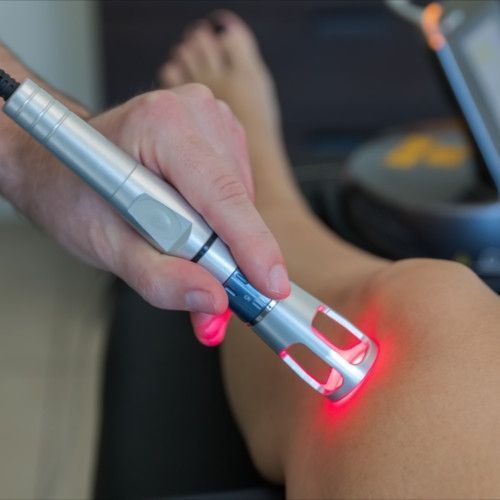Chiropractic Sports Rehab & Physical Therapy Journal Blog
Have you heard of Shockwave Therapy?
Shockwave therapy is an effective approach to pain management with its non-invasive nature and impressive results, it's gaining recognition among healthcare professionals and patients alike. This article dives into the depths of shockwave therapy, exploring how it works and the benefits.
Understanding Shockwave Therapy
Shockwave therapy is the application of acoustic waves to areas of the body experiencing pain or dysfunction. The soundwaves stimulate the body’s natural healing by promoting tissue regeneration and reducing inflammation. There are two main types of shockwave therapy: focused and radial, each with its own characteristics and applications, Relief Care Chiropractic uses an electrohydraulic radial unit.
Applications of Shockwave Therapy
The versatility of shockwave therapy works on orthopedic problems like plantar fasciitis, tennis elbow and rotator cuff injuries. It has also shown promising results in chronic pain management, providing relief to individuals suffering from conditions like fibromyalgia and lower back pain.
Benefits of Shockwave Therapy
One of the advantages of shockwave therapy is its non-invasive nature, over surgery and its associated risks and downtime. It also offers patients a faster recovery time than conventional treatments, allowing them to resume their daily activities sooner.
Efficacy of Shockwave Therapy
Numerous clinical studies and research findings support the use of shockwave therapy to treat a wide range of musculoskeletal conditions, and patient testimonials report significant improvements in their symptoms and quality of life after undergoing shockwave therapy sessions.
Comparison with Medical Pain Management Techniques
Compared to traditional pain medication and injection therapy, shockwave therapy offers several advantages. It is less invasive, safer, and often more cost-effective than surgical interventions. Moreover, it provides relief without the side effects associated with long-term medication use.
Safety Considerations
Shockwave therapy is generally considered safe, but it is not without risks. Common side effects may include discomfort, bruising, or swelling at the treatment site, but are usually mild and resolve quickly.
Cost and Accessibility
Shockwave is more affordable than medication expenses or the costs associated with surgery and rehabilitation. Shockwave therapy is available at Relief Care Chiropractic, making it more accessible to Midland's patients in need.
Future Trends in Shockwave Therapy
As technology continues to advance, so too does the field of shockwave therapy. Innovations such as focused ultrasound and electromagnetic field therapy hold promise for further enhancing the efficacy and precision of treatment. Moreover, as awareness of the benefits of shockwave therapy grows, it is expected to become more integrated into mainstream healthcare practices.
Case Studies and Success Stories
Numerous case studies and success stories highlight the transformative impact of shockwave therapy on patients’ lives. From professional athletes returning from sports injuries to individuals finding relief from chronic pain conditions, these real-life examples highlight the potential of shockwave therapy to shift the paradigm in pain management.
Expert Opinions and Recommendations
Very few healthcare professionals understand shockwave therapy, and their expertise and insights provide valuable guidance and education to set realistic expectations and maximize the benefits of shockwave therapy.
Myths and Misconceptions
Despite its proven efficacy, shockwave therapy is often surrounded by myths and misconceptions. Common misconceptions include beliefs that it is intolerably painful, ineffective, or only suitable for specific conditions. Dr Fred Knochel debunks these myths and provides accurate information so people can determine if shockwave therapy is right for them.
Patient Preparation and Aftercare
Proper patient preparation and aftercare are essential to maximize the effectiveness of shockwave therapy and minimizing the risk of complications. Pre-treatment guidelines may include avoiding certain medications or activities that could interfere with the treatment process. Post-treatment care instructions typically involve rest, ice, compression, and elevation to reduce inflammation and promote healing.
Potential Limitations
While shockwave therapy offers numerous benefits, it may not be suitable for everyone or every condition. Certain factors such as the severity of the injury, underlying health conditions, and individual response to treatment may impact its effectiveness. Additionally, precautions may need to be taken for certain patient groups, such as pregnant women or individuals with pacemakers.
Conclusion
In conclusion, shockwave therapy represents an alternative approach to pain management that is changing the landscape of modern healthcare. Its non-invasive nature, effectiveness, and long-term benefits make it a compelling option for individuals seeking relief from acute and chronic pain conditions. As research and technology continue to evolve, the future looks promising for shockwave therapy, offering hope to countless individuals worldwide.
FAQs
- Is shockwave therapy painful?
- Shockwave therapy is generally tolerated and may cause moderate discomfort during treatment, but it is not typically described as painful. Some patients describe it like getting a tattoo.
- How many sessions of shockwave therapy are needed?
- The number of sessions required depends on the individual’s condition and response to treatment. Most patients undergo between three to five sessions spaced one to two weeks apart.
- Are there any side effects of shockwave therapy?
- Common side effects may include temporary discomfort, bruising, or swelling at the treatment site. These typically subside within a few days following the session.
- Who is a suitable candidate for shockwave therapy?
- Suitable candidates for shockwave therapy are individuals experiencing musculoskeletal pain or dysfunction that has not responded to conventional treatments such as medication or physical therapy.
- How long does it take to see results from shockwave therapy?
- While some patients may experience relief following their first session, it may take weeks for the full effects of shockwave therapy to be realized, and continued improvement occurs over the following months as the body undergoes the healing process.



Contact Information
Phone: (989) 832-2349
Address: 2525 Washington St STE 500 Midland, MI 48642
Business Hours
- Mon, Tue, Thu, Fri
- - -
- Wednesday
- - -
- Sat - Sun
- Closed






